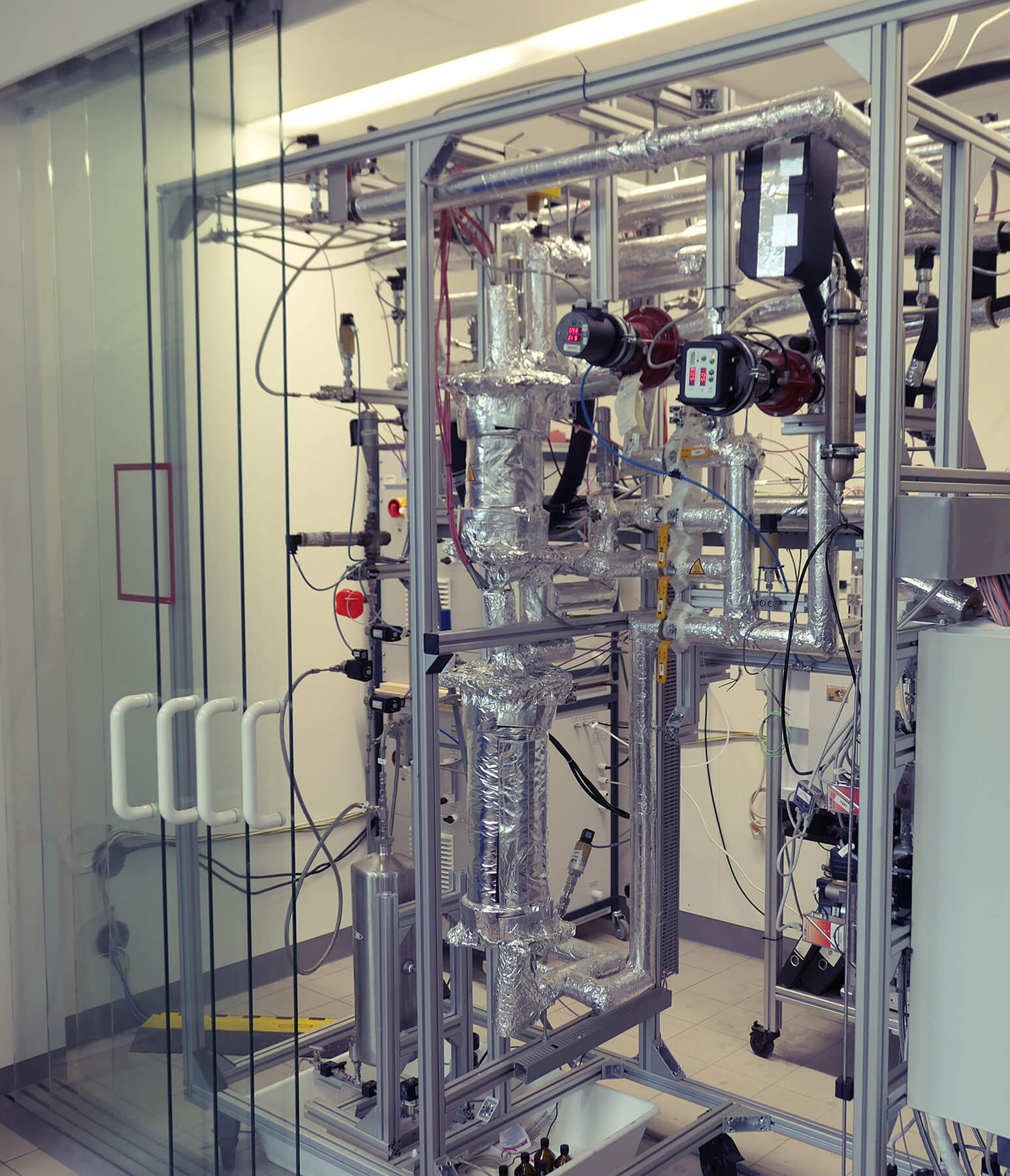| Duration: | 06/2020 - 05/2024 |
| Contracting Authority/ Sponsors: | Bundesministerium für Bildung und Forschung (BMBF) |
| Project Partners: | Fraunhofer UMSICHT Nobian thyssenkrupp Industrial Solutions Ruhr-Universität Bochum Clariant |
| Project Focus: |
Carbon2Chem® Phase 2
Subproject L-II: Dynamic Methanol Synthesis from Steel Mill Gases
German steel mills are responsible for around 6% of Germany's CO2 emissions. Combined under the generic term "steel mill gases", large quantities of process gases rich in hydrogen and carbon oxides (CO2 and CO) are produced in various sub-steps of steelmaking. Currently, steel mill gases are mainly used thermally, i.e. to generate electricity and heat. In the BMBF-funded Carbon2Chem® project, partners from industry and research are investigating various scenarios for using these steel mill gases as materials and closing the carbon cycle.
In the subproject L-II, Fraunhofer ISE is investigating methanol synthesis from steel mill gases. This serves to demonstrate two essential building blocks of the energy system transformation: reduction of emissions and sector coupling.
Fraunhofer ISE is working on the following aspects within the subproject L-II:
- Demonstration of methanol synthesis from purified steel mill gases on a pilot plant scale
- Optimization of catalyst lifetime
- Modeling, upscaling and cost estimation of implementation at industrial scale
- Life Cycle Assessment (LCA)
For a demonstration at pilot plant scale, ISE has designed, built, and commissioned a miniplant. First of all, reliable round-the-clock operation was demonstrated on premises in Freiburg. This was followed by moving the pilot plant to the vicinity of the thyssenkrupp Steel Mill in Duisburg. There, the plant was supplied with cleaned steel mill gases. For the first time in the world, continuous operation of methanol synthesis from purified blast furnace gas was demonstrated in a miniplant. During a total of 6,300 operating hours, around 1,500 liters of crude methanol were produced.
Based on these tests, ISE is trying to predict the maximum lifespan of the catalyst under these unusual conditions. The spent catalyst used in the long-term tests provides valuable insights into the functioning of the process and the gas purification system.
A digital twin of the miniplant was created in parallel with the plant operation, allowing for computer simulations of test runs. After successful model validation, the digital twin was able to provide optimized parameters for its physical twin, greatly accelerating the search for the operating points with the highest possible product yield.
This model can now also be used to scale up the process to the industrially relevant range. In cooperation with the other project partners, process flow diagrams are created and process variants are weighed against each other. A plant cost estimate then enables initial projections of product costs and provides the basis for a profitability analysis.
A life cycle analysis considers all incoming and outgoing streams and allows an assessment of the CO2 footprint of the product methanol from steel mill gases. In this context, ISE is dealing with the calculation of the reference case, i.e. the footprint of a fossil-based methanol synthesis.
